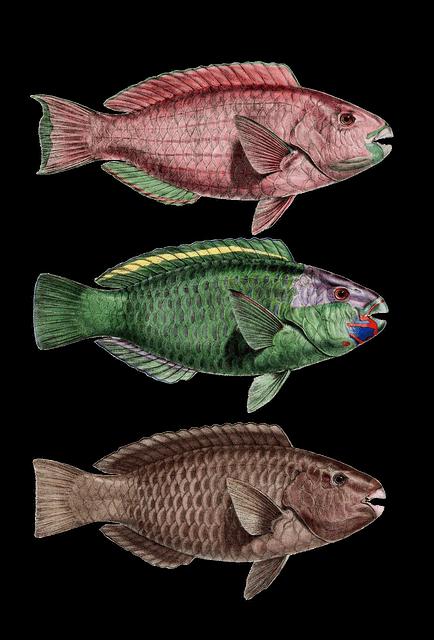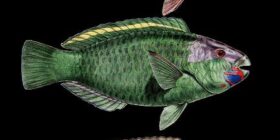The South Korea flounder is anticipated to grow at a CAGR% of 8.0% from 2022-2030. The factors contributing towards the high growth are flounders such as halibut and turbot high-protein and low-calorie food, helps to re-solve the nutritional imbalance from diet because of its rich minerals, carbohydrates and vitamins despite low-calorie. They also offer medical benefits as liver of halibut contains lots of vitamin B1 and B2, which is effective in preventing anemia.
South Korea ranked second in the global flatfish import market. In 2022, South Korea’s import market size is $199 million, registering a 3-year CAGR of 3%.
Among top 10 global importers of flounders, in 2022 South Korea accounted for 19% of the share. South Korea is the 4th largest country in the global flounder export market, in 2022 the export accounted for US $61.76 million in 2022. In the last three-year CAGR is growing at 3% and accounts for 6% of the total global export market.
In South Korea market, technology development is actively taking place in related industries such as flatfish farming technology and freezing processing technology. The USA imports from Korea accounted for a share of 67% of the product. Therefore, it is believed that South Korean flounder will provide huge potential a high influence on the United States. Flounder from Korea is largely supplied in the form of live fish and fresh fish. Live flounder is mainly used by restaurants by Koreans and Chinese Americans. Fresh flounder is used in sushi or steamed fish dishes at Japanese restaurants.
Looking to export your fish, flounder (flat fish) to USA, we provide end to end solutions such as target area to sell, buyer contact details (1000+ buyer contact details such name, company details, contact details, designation etc) documentation before entering the market, export product HS code, registration, production and export product history management, certifications needed in the US market, export mandatory certification system and regulations.
The report analyses South Korea flounders export import data, average unit price, quantity, value (in terms of USD) trade deficit, import price, export price, name of the importer, name of the exporter, port of origin, HS code, product description etc.
This report focuses on identifying opportunities and strategies for investing in the South Korea flounder market within the forecast period. It provides a complete analysis of the global market both quantitatively and qualitatively. The quantitative analysis includes market size and revenue data of the total demand, sub-markets, and regional/national levels throughout 2023-2033. Qualitative analysis depicts a full picture of market dynamics and trends including drivers, restraints and challenges, emerging products/market trends, and Porter’s Fiver Forces analysis.
Request for Sample & Brochure @ https://www.supplydemandmarketresearch.com/home/contact/1527455?ref=Sample-and-Brochure&toccode=SDMRAG1527455
Hypermarket and supermarket channels in the United States are active in securing competitiveness compared to other channels through diversification of product composition, strengthening of product lines, and low prices through development of their own brands. In the case of online channels, platforms such as Amazon, Walmart, and eBay are major players. is dominating the market.
The report is based on studies for 2021-2023 and provides a forecast from 2024 till 2033 with 2023 as the base year. Considering impact of COVID-19 and regional conflicts such as Russia-Ukraine war, the trend and outlook of global market is forecast in optimistic, balanced, and conservative scenarios.
Highlighted with 90 tables and 104 figures, this 189-page report represents a 360-degree view on the global market with extensively detailed segmentations Type, Application, End-User, Export Import, Price, Distribution Channel, and Region/Country as shown below. Annual revenue 2023-2030 for each segment is included in the report.
South Korea Flounder Market By Type
Olive Flounder
Starry Flounder
Golden Flounder
Turbot
Abalone
Others
South Korea Flounder Market By Form
Live
Fresh
Frozen
Canned
Processed
Others
South Korea Flounder Market By Distribution Channel
Off-Trade
Convenience Stores
Online Channel
Supermarkets and Hypermarkets
Other Distribution Channels
On-Trade
South Korea Flounder Market By Application
Supermarkets
Restaurants
Household
Commercial
Others
Request for Discount @ https://www.supplydemandmarketresearch.com/home/contact/1527455?ref=Discount&toccode=SDMRAG1527455
By Region
• North America (U.S., Canada, and Mexico)
• Europe (Germany, UK, France, Spain, Italy, Russia, Rest of Europe; Rest of Europe is further segmented into Netherlands, Switzerland, Poland, Sweden, Belgium, Austria, Ireland, Norway, Denmark, and Finland)
• APAC (Japan, China, South Korea, Australia, India, and Rest of APAC; Rest of APAC is further segmented into Malaysia, Singapore, Indonesia, Thailand, New Zealand, Vietnam, Taiwan, and Philippines)
• South America (Brazil, Chile, Argentina, Rest of South America)
• MEA (UAE, Saudi Arabia, South Africa, and Rest of MEA)
The breakdown of all regional markets by country and the breakdown of each national market by Type, Application, End-User, and Distribution Channel over the forecast years are also included.
The report includes South Korea flounder market status, economy, global trade, local trade, local flounder distribution, item import/export investigation, Korea flatfish market, consumption, distribution, distributors & buyers, export entry key barriers, tariffs and customs duty and certifications and regulations.
Table of Contents
1. Introduction
1.1. Definition
1.2. Assumptions
1.3. Research Scope
1.4. Market Analysis by Regions
1.4.1. South Korea Market States and Outlook (2024-2030)
1.4.1.1. South Korea Flounder Market Size Analysis from (2024-2030)
1.4.1.2. South Korea Flounder Market Size Analysis from (2024-2030) by Consumption Volume
1.4.2. South Korea Flounder Market Size Analysis from (2024-2030) by Value
1.4.3. South Korea Flounder Price Trends Analysis from (2024-2030)
1.4.4. COVID-19 Outbreak: South Korea Flounder Industry Impact
2. South Korea Flounder Market by Types, Applications and Top Regions and Countries
2.1. South Korea Flounder (Volume and Value) by Type
2.2. Coated
2.2.1. South Korea Flounder Consumption and Market Share by Type (2024-2030)
2.2.2. South Korea Flounder Revenue and Market Share by Type (2024-2030)
2.3. Bleached
2.3.1. South Korea Flounder Consumption and Market Share by Type (2024-2030)
2.3.2. South Korea Flounder Revenue and Market Share by Type (2024-2030)
2.4. South Korea Flounder (Volume and Value) by Application
2.5. Food
2.5.1. Processed Food
2.5.2. Fresh Produce
2.5.3. Dairy Products
2.5.4. Food Grains
2.5.5. Confectionary & Bakery
2.5.6. Other Foods
2.5.7. South Korea Flounder Consumption and Market Share by Application (2024-2030)
2.5.8. South Korea Flounder Revenue and Market Share by Application (2024-2030)
2.6. Beverages
2.6.1. Alcoholic
2.6.2. Non-Alcoholic
2.6.3. South Korea Flounder Consumption and Market Share by Application (2024-2030)
2.6.4. South Korea Flounder Revenue and Market Share by Application (2024-2030)
3. Production Market Analysis
3.1. South Korea Production Market Analysis
3.1.1. South Korea Capacity, Production, Capacity Utilization Rate, Ex-Factory Price, Revenue, Cost, Gross and Gross Margin Analysis
3.1.2. Major Manufacturers Performance and Market Share
3.2. Regional Production Market Analysis
3.2.1. Regional Market Performance and Market Share
3.2.2. South Korea
4. South Korea Flounder Sales, Consumption, Export, Import by Regions (2024-2030)
4.1. South Korea Flounder Consumption by Regions (2024-2030)
4.1.1. South Korea Flounder Sales, Consumption, Export, Import (2024-2030)
5. South Korea Flounder Market Analysis
5.1. South Korea Flounder Consumption and Value Analysis
5.1.1. South Korea Flounder Market Under COVID-19
5.2. South Korea Flounder Consumption Volume by Types
5.3. South Korea Flounder Consumption Structure by Application
5.4. South Korea Flounder Consumption by Top Countries
5.4.1. South Korea Flounder Consumption Volume from 2024-2030
5.4.2. South Korea Flounder Consumption Volume from 2024-2030
5.4.3. South Korea Flounder Consumption Volume from 2024-2030
6. Company Profiles and Key Figures in SOUTH KOREA Flounder Business
6.1. XYZ Group
6.1.1. XYZ Company Profile
6.1.2. XYZ South Korea Flounder Product Specification
6.1.3. XYZ South Korea Flounder Production Capacity, Revenue, Price and Gross Margin (2024-2030)
7. South Korea Flounder Market Forecast (2024-2030)
7.1. South Korea Flounder Consumption Volume, Revenue and Price Forecast (2024-2030)
7.1.1. South Korea Flounder Consumption Volume and Growth Rate Forecast (2024-2030)
7.1.2. South Korea Flounder Value and Growth Rate Forecast (2024-2030)
7.2. South Korea Flounder Consumption Volume, Value and Growth Rate Forecast by Regions (2024-2030)
7.2.1. South Korea Flounder Consumption Volume and Growth Rate Forecast by Regions (2024-2030)
7.2.2. South Korea Flounder Value and Growth Rate Forecast by Regions (2024-2030)
7.2.3. South Korea Flounder Consumption Volume, Revenue and Growth Rate Forecast (2024-2030)
7.3. South Korea Flounder Consumption Volume, Revenue and Price Forecast by Type (2024-2030)
7.3.1. South Korea Flounder Consumption Forecast by Type (2024-2030)
7.3.2. South Korea Flounder Revenue Forecast by Type (2024-2030)
7.3.3. South Korea Flounder Price Forecast by Type (2024-2030)
7.4. South Korea Flounder Consumption Volume Forecast by Application (2024-2030)
7.5. South Korea Flounder Market Forecast Under COVID-19
8. Survey Overview
8.1. Background
8.2. Others
9. South Korea Seafood Market Status
9.1. Overview
9.2. Economy
9.3. Global Trade
9.4. Local Trade
9.5. Local Seafood Distribution
10. Item import/export investigation
10.1. Global Trends
10.2. Export/Import
11. South Korea Flatfish Market
11.1. Overview
11.2. Flounder Consumption
11.3. Local Flounder Distribution
11.4. Outlook
12. Overview of South Korea Flounder Distributors & Buyers
12.1. Leading buyers for South Korean Hypermarkets
12.2. Leading buyers for South Korean Importers
12.3. Prospective buyers for large South Korean Raw Fish Restaurants
13. South Korea Export Entry Key Barriers
13.1. Tariffs and Customs Duty
13.2. Certifications and Regulations
13.3. Others
14. Conclusions
15. Research Methodology
Buy Now the report @ https://www.supplydemandmarketresearch.com/home/purchase?code=SDMRAG1527455
Mr. Charles Lee
302-20 Mississauga Valley Blvd, Mississauga ,
L5A 3S1, Toronto, Canada
Phone Number: +1-276-477-5910
Email- info@supplydemandmarketresearch.com






Leave a reply